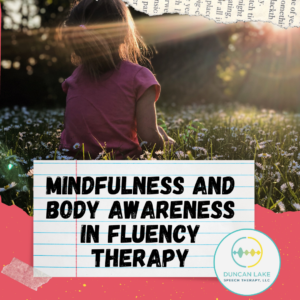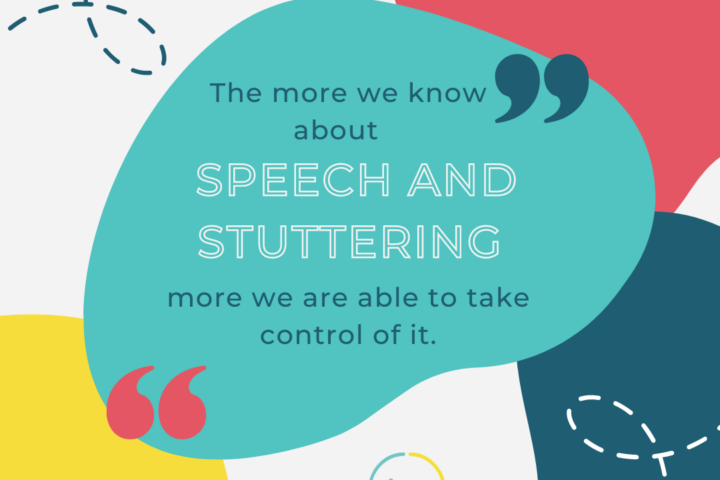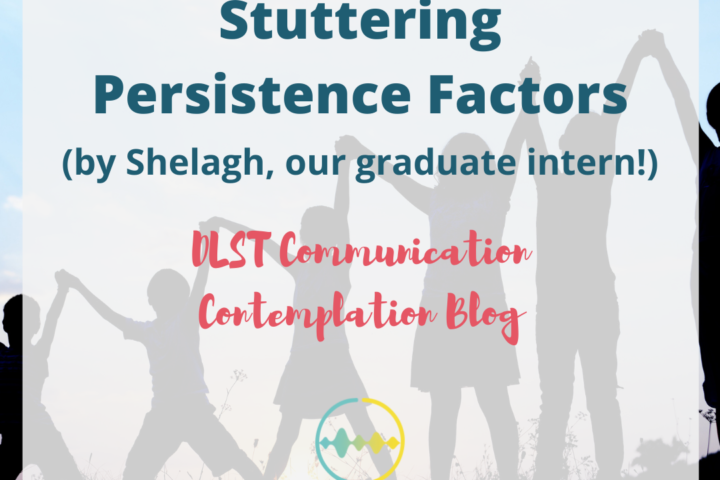Bethany Barber, M.A., CCC-SLP
Duncan Lake Speech Therapy, LLC
If you were a fly on the wall during my sessions with fluency clients, the first few minutes might look more like I’m leading a preschool physical education class, or a mommy and me yoga hour than a speech therapy session. You’d witness silly dancing, “animal” movements such as bunny hops and gorilla crawling, deep breathing exercises, or full body muscle relaxation exercises. Why begin sessions this way? It’s for more than just getting the wiggles out (although that is a great additional benefit!)
Stuttering is a complex and multifaceted disorder. Even for those of us who aren’t diagnosed as having a persistent stutter, speech fluency can be greatly impacted by our emotional state and physical tension. Most of us know the feeling: you slept poorly, are feeling tense from a disagreement earlier in the day, and are put on the spot in a meeting and the words just won’t come out correctly! Imagine if you had a fluency disorder and were on the cusp of that type of a feeling all of the time. That’s why research shows that mindfulness and whole-body awareness can be very beneficial when working with clients who stutter. (Kordell, 2015) A multifaceted disorder requires a holistic approach to therapy!

In the world of preschool fluency therapy, implementation of this looks like doing goofy movements to learn about how our brain and our body communicate with each other. It takes the form of “freezing” our whole body like a popsicle and then “melting” each body part, to feel the difference between tension and relaxation. We breathe like a bee or a snake, and we “smell a flower then blow a bubble”.
For older children and adults who stutter, this may take the form of discussing our emotions, identifying external and internal triggers that lead to an uptick in disfluencies, or doing a guided meditation. It may even mean co-treating or collaborating with a licensed counselor or other mental health professional when appropriate.
Here are a few of my favorite strategies that you might catch me using in therapy sessions with fluency clients (or just by myself after a long day at work – mindfulness strategies and relaxation techniques are beneficial for ALL of us!)
- “Melting” from GoNoodle: A whole-body progressive relaxation video that kids love!
- Flower/Bubble Breath: A simple breathing exercise that can be done anywhere, anytime – Breathe in deeply through your nose like you’re smelling a flower, breathe out slowly through your mouth like you’re blowing a bubble!
- STOMP by Uncle Ian Aurora: This book encourages children to explore whole-body movements, and is a great entry point to discussion about how our brain communicates with our body.
- Guided Meditations: This article outlines four popular and effective mindfulness techniques for older children and adults who stutter
References
Kordell, J (2015). Outcomes of a Combined Mindfulness, Stuttering Modification, and Fluency Shaping Intervention for Children who Stutter. University of South Florida ProQuest Dissertations Publishing. 1595810




